
You may hear of stories of rare coins being auctioned off for millions of dollars. It seems like a far-fetched idea that any coin would ever go for that much at auction. In the numismatic collecting arena, it is not impossible and it is actually more common than you might think. Many of these million-dollar coins are hard to find, but there are some hiding in plain sight. To the untrained eye, we may not think a coin is deserving of such a high dollar amount, but history tells a different story.
Standards for Coins to be Auctioned for Millions of Dollars
- Rarity. Perhaps one of the main defining factors of a coin’s million-dollar expectation is the rarity. Rare coins are difficult to come by for a reason. Numbers are not on their side, but if you own one, it should be kept and stored securely until the right time. Many things can happen, and the coins can be lost, stolen, or not stored poorly.
- Year. The year is a defining factor as well. Political and societal events can change the value of a coin much like the case of the 1894-S Barber Dime below, which was minted during a recession. The year is important to note due to mitigating factors at the time. Some of these factors include low mintage because of a shortage of metal, laws prohibiting the production of a particular type of coin, or limited minting due to an economic recession.
- First of its kind. The 1794 Silver Dollar below fetched millions of dollars at auction in 2013 and again in 2015. These rare silver dollars were the first to be struck in the United States. They also contained 90% silver content, which is something early settlers had never experienced up to that point. This coin set the precedent for the American dollar.
Here are three examples of coins that have gone or will go for millions of dollars at auction:
1894-S Barber Dime
According to a CBS News article, “Only 24 were made, and only nine likely still exist.” This Barber Dime was produced at the San Francisco Mint during a time in which dimes weren’t needed because of a recession. This coin has the perfect balance between rarity and historical significance.
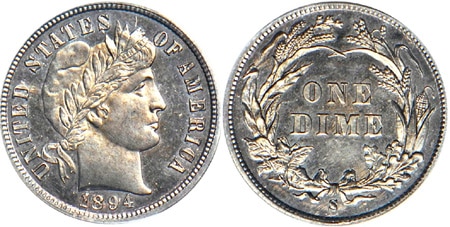
1822 Capped Head $5 Half Eagle
This coin was unobtainable for decades because it is only one of three that exists. “The other two Half Eagles from 1822 are housed at the Smithsonian Institution.” (LA Times) This $5 Gold coin was owned by the infamous Brent Pogue, who assembled one of the most extensive private coin collections.

1804 U. S. Silver Dollar
This coin was “originally owned by the Sultan of Muscat in 1835 and then by the Childs Family Collection for more than 50 years,” (Business Insider). It is graded a nearly perfect PR-68 by PCGS, one of the top coin grading services in the world.
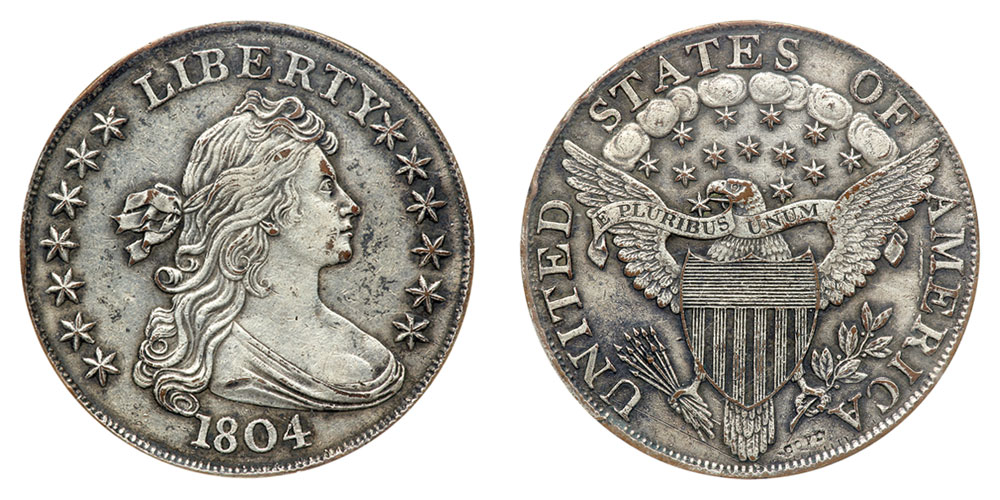
These coins, plus other rare coins, have a lofty auction price for varying reasons, including their condition, history and handling. Much like a good wine, the value increases with age as the intrinsic value grows through generations.
Other Rare Coins
Not all rare coins go for millions of dollars at an auction, but can still be valuable. Older coins in good condition can still be worth 10s of thousands of dollars at private coin shows, online auctions, or even available on a retail site. Here are some extremely valuable coins available on APMEX.com, and why they are worth so much.
1806 Draped Bust Quarter MS-65 PCGS

This 1806 Draped Bust Quarter is worth $116,495 at the time of writing. Its value is predicated on the fact that it has been graded and certified by PCGS as an MS-65 coin. Only 206,124 of these coins were even produced, and of the survivors, none are known that have a higher quality than this one. In fact, only 3 others exist that are also graded MS-65. The age, rarity, and condition of this coin make it a valuable addition to a serious collection.
1793 Flowing Hair Large Cent MS-62 PCGS (Brown, Lettered Edge)
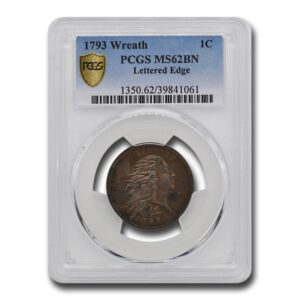
1793 Flowing Hair Large Cents are considered one of the rarest coins ever minted. They were the first coins produced by the new United States Mint and were only minted during that year. This particular Flowing Hair Large cent is one of only 63,353. At the time of writing, it is worth $110,995.
1840 Liberty Seated Dollar PF-65 NGC
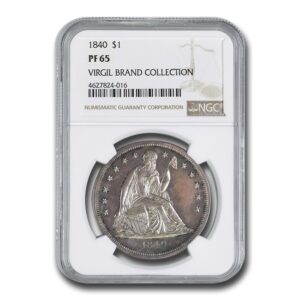
This 1840 Liberty Seated Dollar is only one of three graded with a PF-65 condition. At the time of writing this, it is worth $110,995.
1879-CC Morgan Dollar DMPL MS-65 PCGS
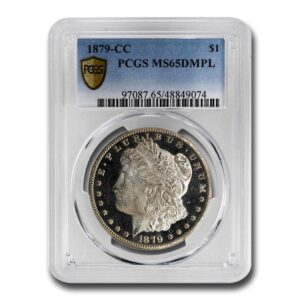
Morgan dollars are one of the most collected coins in the world. This 1879-CC Morgan Dollar is worth $97,995 and is one of only two in the world graded MS-65. This Morgan Dollar feature the Carson City mint CC mintmark, and has a mintage of 756,000.
1909 VDB Lincoln Cent PR-66 PCGS CAC (Red)
Lincoln pennies are another of the most collected coins in the world. This 1909 VDB Lincoln Cent it is graded PR-66 by PCGS and attributed by CAC to ensure the grade of the coin. It is one of only six coins 1909 Lincoln Cents with a grade of PR-66.
While some rare coins achieve multi-million-dollar bids at auctions, countless others still hold significant value and are traded through private sales, online marketplaces, and coin shows. Their worth often stems from a blend of factors such as rarity, historical significance, and condition, which contribute to their appeal among collectors. As coins age and become increasingly scarce, their value frequently rises, making even non-million-dollar specimens sought-after treasures. For collectors, the hunt for these valuable coins offers an exciting opportunity to own a piece of history with the potential for future appreciation.





